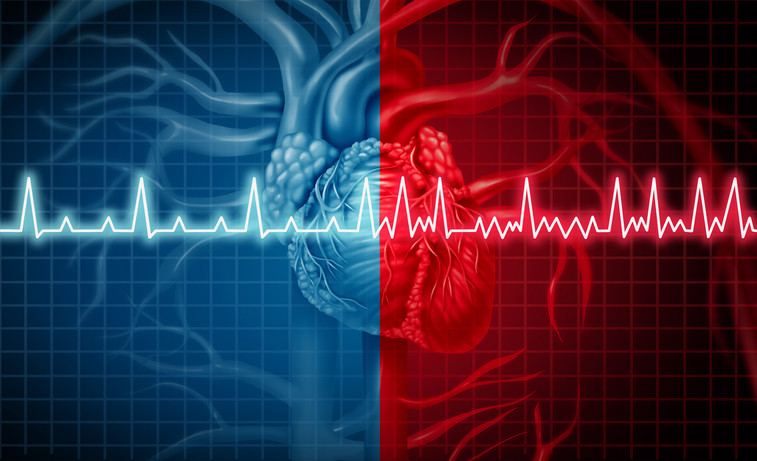Abnormal Heart Rhythms

Abnormal heart rhythms, also called arrhythmias, develop when a problem arises in the heart's electrical system. These can make the heartbeat faster or slower than it should or beat with an irregular or disordered rhythm.
Normally, heart beats regularly at a rate of 60 to 100 times per minute. And the pulse (felt at the wrist, neck or elsewhere) matches the contractions of the heart's two powerful lower chambers, called the ventricles. The heart's two upper chambers, called the atria, also contract to help fill the ventricles. But this milder contraction occurs just before the ventricles contract, and it is not felt in the pulse.
There are many types of heart rhythm disorders. Some occur in the heart's upper chambers (the atria) and some occur in the lower chambers (the ventricles). They also can be classified according to their effect on the heart rate, with bradycardia indicating a heart rate of less than 60 beats per minute and tachycardia indicating a heart rate of more than 100 beats per minute.
Symptoms of abnormal heart rhythms
Symptoms of cardiac arrhythmias may include:
- fast or slow heartbeat
- feeling like the heart is skipping beats
- feeling lightheaded or dizzy
- chest pain
- shortness of breath
- sweating
Fast vs. slow cardiac arrhythmias
Abnormal heart rhythms that usually cause a fast heart rate:
- atrial fibrillation
- atrial flutter
- atrial tachycardia
- paroxysmal supraventricular tachycardia
- ventricular fibrillation
- ventricular tachycardia
Abnormal heart rhythms that cause a slow heart rate:
- heart block
- sinus node dysfunction
Irregular heart rhythms with a normal heart rate include:
- premature atrial contractions
- premature ventricular contraction
Diagnosing abnormal heart rhythms
A test called an electrocardiogram (EKG) often can confirm the diagnosis of a cardiac arrhythmia. However, because cardiac arrhythmias may come and go, a one-time office EKG may be normal. If this is the case, an ambulatory EKG may be required. During an ambulatory EKG, the patient wears a portable EKG machine called a Holter monitor, usually for 24 hours, but sometimes much longer. You will be taught to press a button to record the EKG reading whenever you experience symptoms. This approach is especially useful if your symptoms are infrequent.
Image: wildpixel/Getty ImagesDisclaimer:
As a service to our readers, Harvard Health Publishing provides access to our library of archived content. Please note the date of last review or update on all articles.
No content on this site, regardless of date, should ever be used as a substitute for direct medical advice from your doctor or other qualified clinician.












